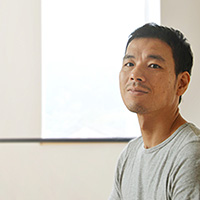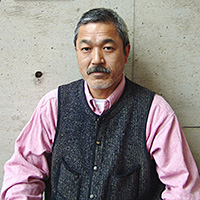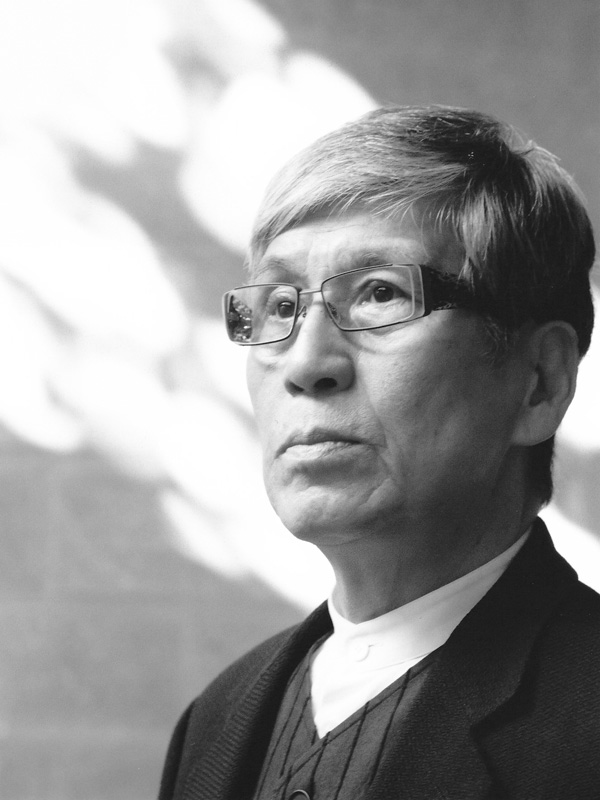Award-Winning Entries
Grand Prize
-
「PINUS」 Ryoma Kato (KATORYOMA design STUDIO)


-
Winning comment
I read Charter of Hida Design and impressed with Hida furniture’s way of being and its clear orientation towards the future. I will be more than pleased that I can help craftsmen of Hida who try to create products with Japanese techniques and identity for people of the world. Thank you very much for choosing me as the first prize.
Excellent Prize
-
「EQUILIBRIUM TABLE」 Kohsuke Toda


-
Winning comment
I am terribly honored to receive this award. For this contest, I created “Equilibrium Table” to show the furniture created in Japanese culture, as Hida represents the furniture production in Japan. I believe that it is worth creating “the Japanese furniture” when most people are so familiar with western style furniture. I am grateful that I could share this idea with the organizer. Thank you very much.
-
「Reversible Chair」 Makoto Hashimoto (haaz Co., Ltd.)


-
Winning comment
I am pleased to see my idea of a folding chair, designed especially for Japanese small houses, being materialized with domestic lumber and Japanese delicate woodworking technique.
I hope that Japanese woodworking culture will be acknowledged worldwide and develop in the future through this chair.
-
「HANGING BRANCH LAMP」 Wong Kai Shing (PAPER X DESIGN)


-
Winning comment
I want to make the best use of wood by manufacturing process, and I suppose that is a respect for nature.
While I’m thinking how to make a big impact for people to treasure the wooden products, I hit upon branches as a good medium for people to imagine of trees. I wanted to use the remain wood from production process for my design, so that the products must be small size and easy to make.
Regarding “branches”, the functions, in the ancient days, are hanging and supporting something and can be fired. and therefore I design the functions of product including hanging and lighting.
Incentive Prize
-
「LILLY CHAIR」 Edouard Pillet (Strate école de design)


-
Winning comment
The Lilly chair embodies woodworking and craftsmanship, by bringing the joinery of the chair forward.
The structure of the chair is composed of bent wood elements that interlock together enclosing the light plywood seat. The joining elements are crafted out of contrasting wood to further enhance the visual impact of the chair. The Lilly chair is meant to be versatile and can be used both as a working chair and as a dining chair
Special Prize
-
「Gradazione」 Daisuke Inoue (studio +d)


-
Winning comment
Thank you very much for awarding the special prize for me. I thought it was a kind of mistake when I had a message to let me know about the award. I personally have strong feelings for Hida furniture and I have always been thinking that it should be acknowledged all over the world. I thought that, by applying for this contest, I might be a little help to let the world know about Hida furniture. I sincerely hope that competitions like this will help to create good products and Hida furniture will be known and used in the world.
-
「Paraboloid」 Kunikazu Hamanishi (Hamanishi DESIGN)


-
Winning comment
I am truly honored to receive this award, and pleased to see such an experimental approach was highly valued. Although I know that there is a pile of challenges ahead for commercialization, I will work harder on design and production from now on, and this award will be my encouragement.
From the organizer
I would like to say at first that we truly appreciate to have as many as 353 entries for our contest.
What is more, most entries were from outside Gifu prefecture, and we had even entries from 23 countries all over the world. Besides, it was encouraging for us to see that two thirds of applicants were the young generations in their teens, twenties or thirties, and mostly designers and students. We are very pleased that we could provide a link through this contest between these applicants and Hida where, I would rather say, it is not a quite easily accessible place. This contest was carried out with the aim that the current generation would get to know about Hida and its furniture, along with new product development. In that sense, we were satisfied with the outcome that could partly achieve the aim.
However, this is only the beginning, a milestone for us, and we know that there is a long way to go.
This positive movement should not be stopped here, but be continued to develop in Hida as the place of origin where we could extend the movement longer and wider. It is not at all easy and takes time to commercialize products, but we see it as a challenge for Hida to deal with. We will continue to plan this kind of events for years to come. In order to provide a place for young people to play active roles, these designs are to be materialized by using Hida’s techniques, and people involved would cooperate to develop a product for commercialization. It will be great if Hida can attract attentions from the world by repeating this flow of creation.
Lastly, I would like to say thank you for people involved in this contest, including outside advisors, members of the press who did the coverage, and all the other people who supported us. Thankfully, there are a number of tourists from abroad to Hida these days, and we hope that Hida as a place of producing furniture will be able to get more attention worldwide. We will also be grateful for your continuing support in the future.
HIDA WOOD WORKING FEDERATION
External advisors comments
-

-
Motomi Kawakami (Designer)
I have been involved with Hida for over thirty years, creating prototypes and products with various makers. There are also some projects currently in progress. Young people may not know, but Hida Woodworking Federation had held contests called “Hida, Takayama student furniture design award” for ten times in the past, and I also participated them as one of the reviewers. Having experienced such years, I was wondering how this contest would go in the current age, and it turned out that the number as well as the quality of entries went well beyond my initial expectation. I heard that these applications were done mainly via the Internet promotion, and I cannot help being aware of changing times. Among those entries that won prizes, some seemed to be technically difficult for commercialization and I wasn’t so sure whether makers could decide to try overcoming such difficulties. However, maker’s challenging attitude seemed to help recognizing those entries in the end. It won’t be an easy job for them, including the first prize winner, to make prototypes, but overall result of the contest was satisfying enough with a variety of prize winners including young and overseas applicants. I heard that it has already decided that this contest will be held again next year. I am looking forward to seeing furniture that will stimulate and lead the future of Hida to the next generation.
-

-
Chiaki Hayashi (Representative Director of Loftwork Inc. and CEO of Hidakuma Inc.)
As I know the forest and trees better, I get more and more attracted to them, feeling like telling people about how wonderful they are. Every time I go into the forest, I feel the strength of Hida’s tree that attracts people. I could get to know another reason for Hida’s strength through this Hida Furniture Award. What impressed me about this award was that entries, whether from within and outside of Japan, utilized traditional kumiki (wood joinery) and mageki (wood bending) techniques. It shows that Hida’s technique is acknowledged and understood widely. Besides, I was moved to see the members of Hida Woodworking Federation showed challenging attitude towards difficulties with no trace of defensiveness, which came from their confidence and DNA of Hida’s woodworking craftsmanship.
Since it was an award, it is inevitable to draw a line between awarded and not-awarded entries. Still, I was pleased to see the overall context and quality of entries were both high, and the first and second prizes went to products with much difficulty.
-

-
Yasushi Yamazaki (To-Ryu-Mon Brand director of JDN Inc.)
I participated in this contest through its planning and operation. Main reviewers are the makers of Hida furniture, along with the outside advisors, a professional furniture designer Kawakami-san and Hayashi-san who is keen on various cutting edge ideas. Thus, I considered my role in this contest was to make some advices from the viewpoint of facilitating and communicating information. I have been involved in many contests and reviews, and I know that the first time is always hard. It is because the organizer must set their own criteria and what the review should be based on. But as you see in the result, designs with challenging elements got prizes. I saw, in the process of reviewing, that leaders of Hida craftsmen were willing to change, and I’m sure it is a natural spirit of Hida where woodworkers started to make western chairs as a venture business approximately 100 years ago when they had even seen one before. For them, it may be natural to challenge new things.
Hida’s spirit of Monozukuri (meaning making things with intangible qualities of craftsmanship), and wooden furniture made in Japan – whether it is made in Hida or not – every time I met people involved with Japanese wooden furniture, I strongly feel that Japanese furniture is still a full of originality and potential. I deeply appreciate for people I met through this contest and would like to help developing this movement further.
Overall comment from the reviewer
Entries of this contest were reviewed by representatives of 13 companies that belong to Hida Woodworking Federation. In order to have various and critical points of view for the reviewing process, we invited 3 outside advisors for making open comments.
The theme of this contest was “Designs for wooden products”. As Hida’s history started from producing a chair and it has become one and only place of origin for furniture production in Japan, the symbol of this contest is an illustration of a chair. Today, however, there are various makers in Hida that produce not only chairs but also various furniture, lightings, and sundries. The theme reflects Hida’s current circumstance as well as our commitment to new challenges including building products and bedding. Looking at the entries, designs of chairs and stools were many with 137 entries, which was about 40% of all entries. The rest of them were tables, storage items, sundries and lightings. Having a chair as the symbol of this contest while requiring diversity at the same time, the result seemed to reasonably reflect the theme.
The process of review was as follows: Firstly, each reviewer voted for what they liked among all entries of 353 items, and 89 entries that obtained votes remained for further review. Then, outside advisors checked all the entries, especially the ones that didn’t obtain any vote, to see if any entries might be good enough for further review. In the final review, all the reviewers and outside advisors came together and discussed appealing points of each entry. Reviewing criteria is shown later, but keywords for the review are “wood”, “design”, “Hida”, and “commercialization”. These are what each reviewer does for living and judge on the daily basis. In such circumstance, ideas from the outside, especially from young generation or from overseas, were new and gave the reviewers a lot of inspirations.
Before referring to each awarded entry, it should be noted that another prize, Special prize, was added to the initial prizes and 2 entries were chosen for that prize. It was due to the quality of application, much higher than we initially expected. Therefore, 7 entries in total were chosen for prizes. We discussed which prize should go to which entry among these 7 candidates. For that discussion, we needed to consider what made the entry eligible for the first prize, in addition to the reviewing criteria mentioned earlier, to become a representative of this new contest.
As a result, the first prize went to a chair with a motif of pine needle created by wood bending technique. Although it is technically challenging, the design which displays Japanese concepts such as the origin of Hida and the pine needle as a lucky charm was highly valued. It is also innovative to create an impression between a three-legged and four-legged chair. The second prizes went to 3 entries: “Equilibrium Table”, a low table with application of compressed Japanese cedar and mageki technique; “Reversible Chair” which can be folded with reversible seating surface; and the lighting made of irregular branch with mageki technique, named “Hanging Branch Lamp”. Each item is technically challenging and makers in charge of their commercialization will have to overcome difficulties. The incentive prize for students and designers under 30 went to “Lilly Chair” of which slim form reminds us of a folding steel chair. In addition, we decided to honor 2 entries, a mageki chair with strings at the back surface named “Paraboloid” and a sideboard with distinctive feature of plywood named “Gradazione”, since the applicants of these entries were both over 30.
Finally, we the reviewers are proud of presenting these challenging 7 entries as the prize-winning items, with an expectation for them to create new Hida standards.
HIDA WOOD WORKING FEDERATION
Organizer
HIDA WOOD WORKING FEDERATION